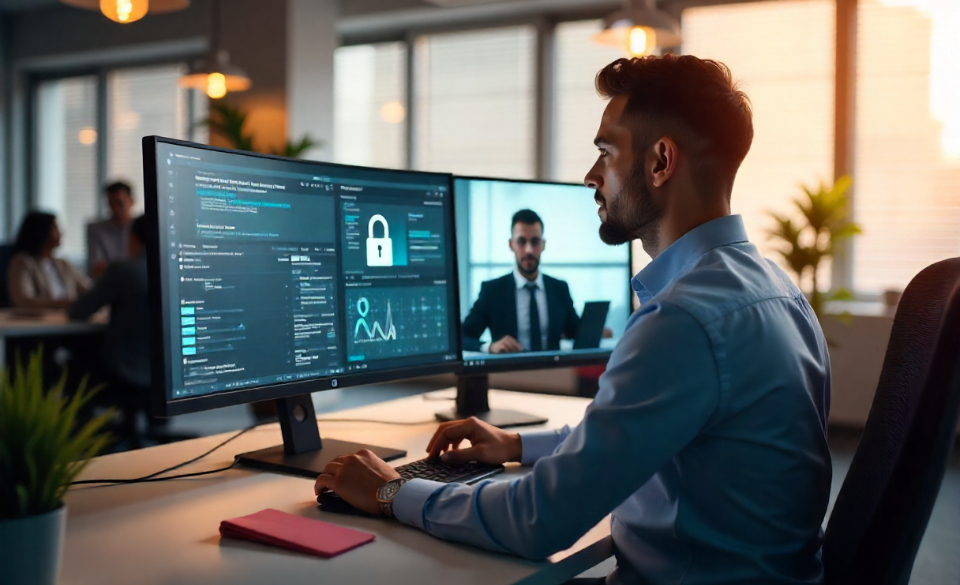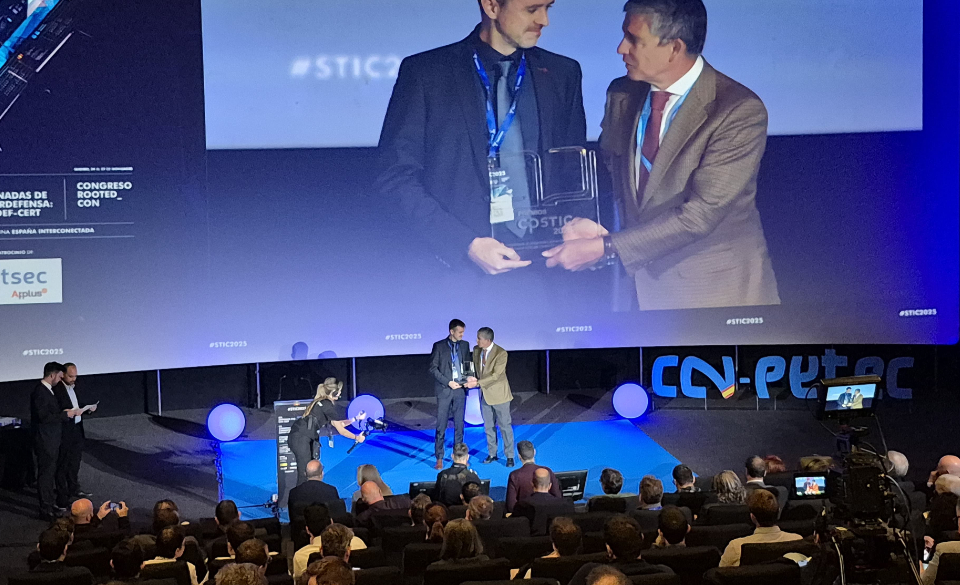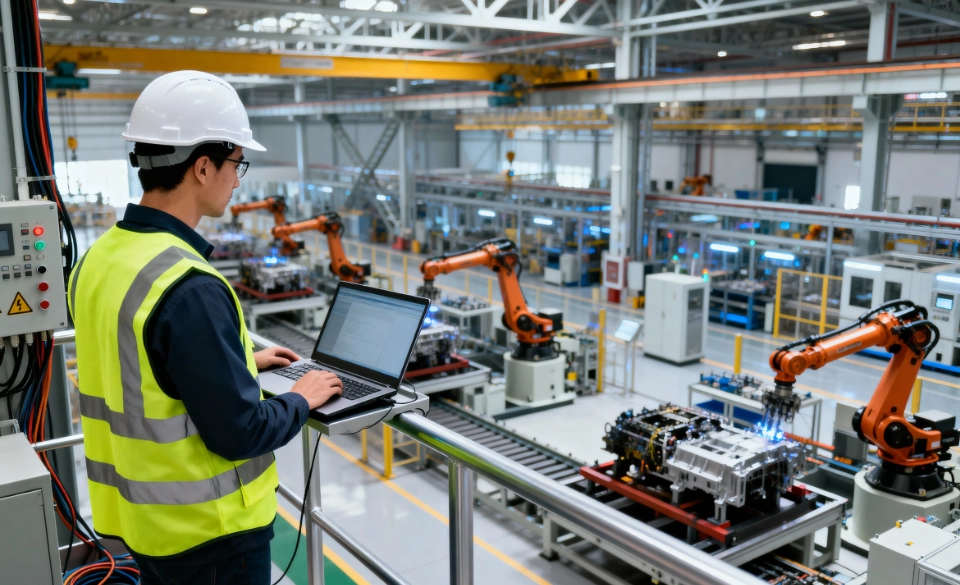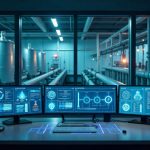
Security in OT Environments for Water Management
14 de August de 2025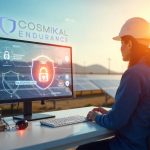
Deployment of endurance in a photovoltaic plant: use case
28 de August de 2025We live in an era where organizations’ digital, physical, and logical assets are more valuable than ever. The attack surface is expanding, hybrid environments are becoming more complex, supply chains are being digitized, and remote access has become the norm. Against this backdrop, privileged access is one of the main targets for cyber attackers. But the real danger lies not only in who accesses the system, but in what they can do once inside and how they do it. This is where one of the core pillars of a modern cybersecurity architecture comes into play: the isolation and real-time monitoring of privileged sessions.
What Do We Mean by “Privileged Sessions”?
Privileged sessions are those initiated by users ,human or machine, who have elevated or critical access within an organization. This includes system administrators, maintenance technicians, OT engineers, external service providers, software integrators, and support teams with critical roles. These sessions pose a significant risk if not properly managed, as they enable high-impact operations at the core of corporate or industrial infrastructure.
Some of the most common actions performed in these sessions include:
- Modifying critical network or system configurations: A privileged administrator can reconfigure firewalls, switches, industrial controllers, or even perimeter security elements, essential for maintenance, but potentially disastrous if misused or left unchecked.
- Accessing and manipulating sensitive databases: This includes reading, modifying, or even deleting records such as customer data, billing information, medical histories, or personal data protected by laws like GDPR or local data protection regulations.
- Intervening in industrial infrastructures or connected physical systems: Privileged sessions allow certain profiles to interact with SCADAs, PLCs, RTUs, IoT sensors, or communication antennas. Any unauthorized changes here can have real-world physical consequences, from halting a production line to accidentally depressurizing an industrial tank.
- Executing remote maintenance operations on critical systems: These can include firmware updates or the installation of custom software, operations necessary for the business but which could also serve as entry points for malicious code or as vectors for data leaks.
The Problem: Access Alone Is Not Enough
Traditional access management has focused for years on “who gets in”: strong password policies, multi-factor authentication, encrypted VPNs, role-based access rules, or IP allowlists. But that approach falls short.
The real challenge begins after access has been granted. Once inside, a privileged user, if not properly controlled, can fully interact with the environment: extract data, alter processes, run scripts, move laterally across the network, scan assets, or leave behind a backdoor.
And all of this, in many cases, without clear traceability or real-time alerts.
In this context, organizations can no longer afford to operate blindly. They need not only to grant access in a controlled way but also to encapsulate, log, and monitor each critical session in real time, with the ability to respond immediately.
What Is Privileged Session Isolation?
Session isolation involves placing a controlled layer between the privileged user and the final resource they need to access, so that no direct connection exists between the two. This intermediary layer acts as a “zero zone”, a controlled and monitored bubble where everything that happens can be audited and restricted.
How does this isolation work?
- The session runs in a virtualized environment, independent of the real system. This could be a virtual machine, a secure container, or a managed VDI environment. The user never directly interacts with the target system (server, SCADA, database, etc.), but instead with a projected interface that simulates the connection.
- A connection broker translates the user’s events. Instead of transmitting protocols like SSH, RDP, or Telnet, only keyboard, mouse, video, and audio events are securely encapsulated and transmitted. This completely blocks unauthorized packet injection, network scanning, or file copying outside the controlled environment.
- The environment is destroyed when the session ends, eliminating any residual data or temporary configuration. Nothing persists, nothing is exposed. The goal is to guarantee an ephemeral, secure, non-transitive sesión, leaving no room for hidden threats or persistent connections.
- There are no lateral routes or access to network resources. The user cannot connect to other network devices or run commands outside the isolated environment. By design, isolation represents a full logical air gap between the operator and the infrastructure.
What Does Real-Time Monitoring Provide?
While isolation ensures that the user operates in a closed environment, real-time monitoring tracks what the user does, how they do it, and what the impact of their actions might be.
- Live session view: The security team can watch in real time what the user is doing inside the isolated environment, as if broadcasting their screen. This makes it possible to detect deviations, suspicious behavior, or unauthorized access at the very moment it happens.
- Alert generation for suspicious behavior: Monitoring allows you to define rules to detect specific usage patterns, attempts to execute unauthorized binaries, access outside working hours, interaction with unexpected ports, changes to critical parameters, etc. These alerts can be sent to a SIEM or SOC for immediate intervention.
- Direct intervention in the live session: If an active threat or serious deviation is detected, supervisors can pause, disconnect, or terminate the session immediately, preventing damage from spreading or being carried out.
- Full recording for forensic analysis: All activity can be recorded in video, with associated logs, executed commands, and environmental metadata. This is not only valuable for audits, but also as a tool for training and continuous improvement.
- Perfect traceability: Monitoring ensures that every action is tied to an identity, a device, and a specific timestamp. There’s no room for “it wasn’t me.”
Why Is It Essential?
Privileged sessions enable deep modifications to the organization’s core and must therefore be subject to the highest level of protection and oversight.
Three key factors make this defense not just desirable, but critical:
- The exponential growth of remote access to critical infrastructure: Remote work, outsourcing, partner integration, and the need for remote technical support have opened thousands of access points to the most sensitive assets in organizations.
- The sophistication of persistent threats: Many attacks no longer aim to exploit a single vulnerability, but instead mimic legitimate users and operate within real sessions using valid credentials. Only real-time monitoring can detect such behavioral anomalies.
- Increasingly strict regulatory compliance: Regulations such as NIS2, DORA, ENS, ISO 27001, or national industrial security schemes require traceability, access control, active monitoring, and evidence of privileged access intervention. Non-compliance is not optional, it directly leads to penalties and loss of trust.
Real-World Applications in IT, OT, and Hybrid Environments
- In IT environments, this technology allows for encapsulated access to critical servers, remote desktops, cloud management panels, or DevOps infrastructures. An external integrator accessing a Kubernetes environment or a production database must do so from an isolated, monitored environment with no direct contact with the real systems.
- In OT environments, session isolation ensures that a technician, whether in a factory or another country, cannot run commands on PLCs, antennas, or industrial sensors without oversight. Real-time monitoring can also stop actions that might physically harm the process (e.g., halting a line, overheating a system, opening a pressure valve).
- In hybrid environments, where IT and OT converge, isolation and monitoring break the threat propagation chain between the two. For example, an OT technician using RDP to access a SCADA console cannot unintentionally (or intentionally) open a gateway to an internal IT server.
How Does Endurance Solve It?
Endurance is far more than a PAM solution. It is a shielded remote workspace that encapsulates, monitors, and secures all of an organization’s critical sessions.
- Full session encapsulation: Each session runs in an on-demand virtualized environment, eliminating any possibility of direct contact with real assets.
- Physical and logical isolation: Traffic is reduced to mouse, keyboard, video, and audio events. No native protocols, parallel connections, or lateral bridges are allowed. The asset is completely shielded.
- Active real-time monitoring: Security teams can view sessions live, generate rule-based alerts, and stop suspicious activity within milliseconds.
- Integration with Zero Trust policies and SIEM systems: Endurance is part of a modern defense ecosystem, where access is continually validated and trust is earned at every interaction.
- Coverage for mixed IT/OT environments: From a virtual server to a rooftop telecom antenna, Endurance ensures that every access is secure, controlled, and auditable.
Conclusion
Real-time isolation and monitoring of privileged sessions is not a luxury, nor an add-on, it’s an essential, strategic, and urgent defense. In a landscape where elevated access is increasingly common, and the human vector the most exploited, protecting what happens inside the session becomes the new cybersecurity battlefield.
Whoever controls the session, controls the risk.

